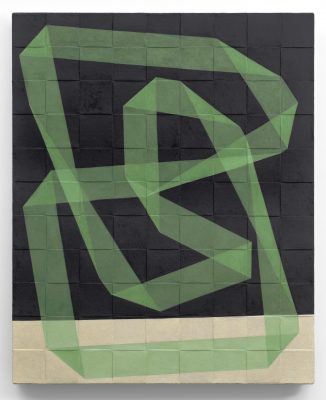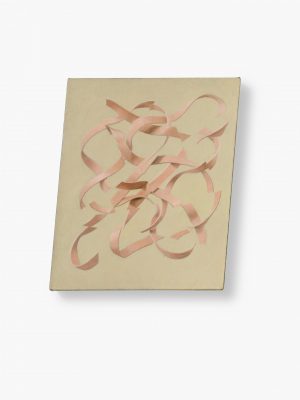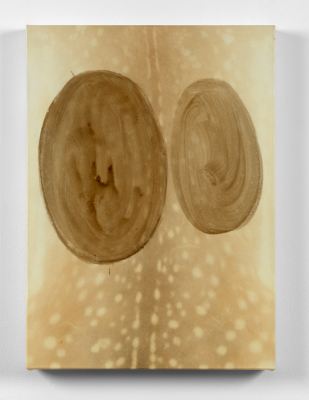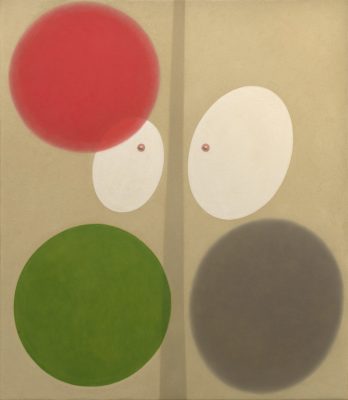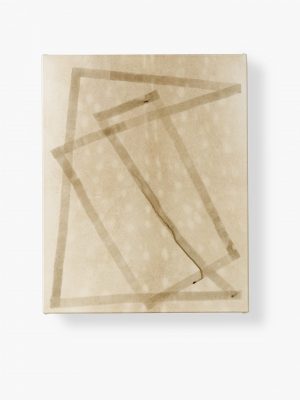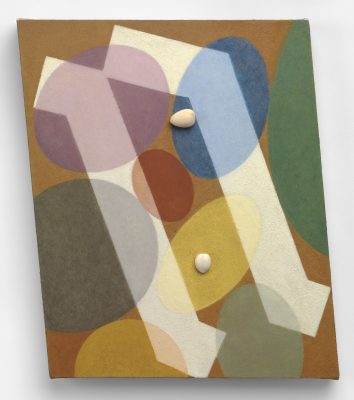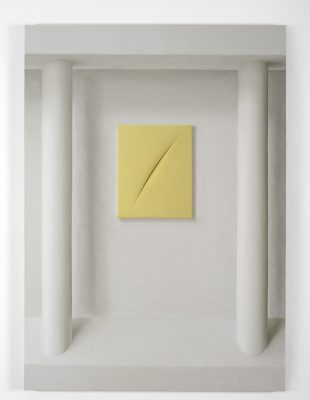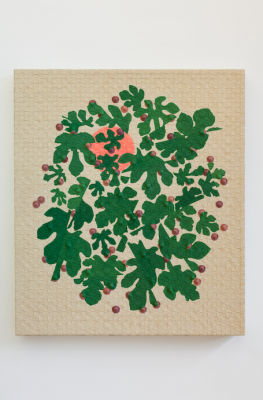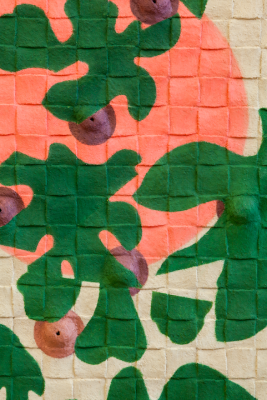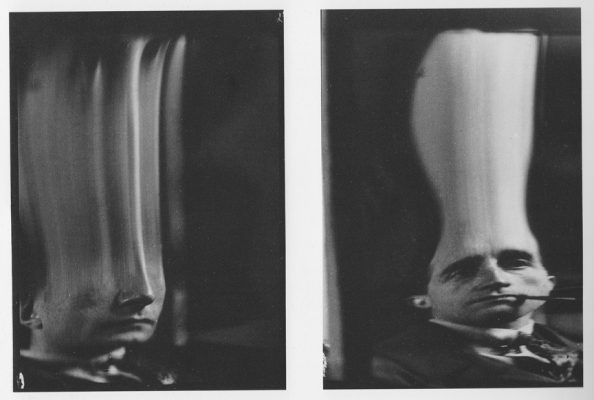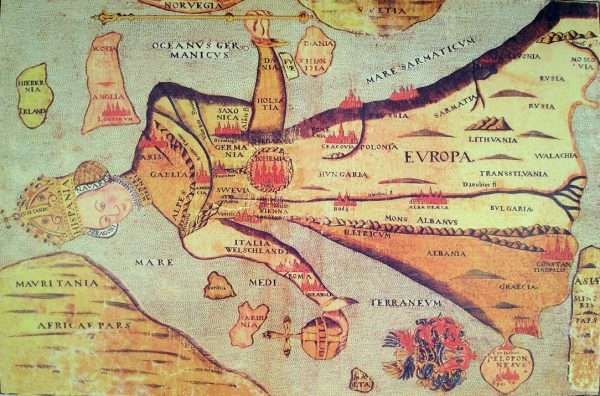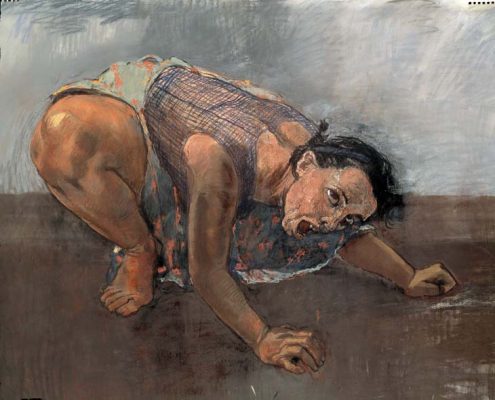In the decade after leaving Chelsea School of Art in 2002, Daniel Sinsel made a name for himself with puckish, homoerotic, trompe l’oeil paintings: flutes draped in fabric, bottoms and slits, gaping mouths, and various conceits of pictorial hide-and-seek. That period culminated in a solo show at London’s Chisenhale Gallery in 2011, since when Sinsel has turned his attention to the materiality of painting, making frames, hand-weaving canvases, and producing objects to insert through their surfaces.
‘Where’s the sex gone?’, he recalls one disappointed gallerist asking him. While there may be fewer flutes inserted between butt-cheeks, such disappointment is unfounded, even among the more prurient of his following. In focusing on the sculptural possibilities of painting, Sinsel brings tension, allusion and kink to the essential components of the medium: now, more than ever, erotics are fundamental.
When I first visit Sinsel in his studio in South London, a number of his paintings are on tour as part of the British Art Show 8, and he is preparing for solo exhibitions at Office Baroque in Brussels in April, and at Sadie Coles in London in July. I am welcomed into a cluttered room by a tall, softly-spoken German man with skeletal cheekbones and remarkably elongated fingers. Aged 40, Sinsel has about him an air of faded, magical difference – like a boy from a fairy tale, forced to mature in a world of high-speed proclivities at odds with his own fey somnolence.
He hands me some materials he is using in his latest work: a whale tooth, out of which he has hand-carved almonds, a pair of pink nipples fashioned from coral, and a fossilised turtle dung which stains my hands ochre. As we talk, Sinsel sits on a stool in front of a half-finished painting, his spindly body framed by allusion and craft. He has slipped hazelnuts between the weave of the canvas, so that the surface bulges suggestively. Painted on to the canvas, and covering these protuberances with a nod to Renaissance modesty, a composition of fig leaves is slowly taking shape. He recently employed an assistant, he tells me, to extract each nut from a sack of hazelnuts, before gluing the shells back together. It will stop them from rotting and attracting flies, he says – it is also precisely the type of arduous, sexually encoded labour that makes his paintings pulse.
When I return a month later to interview Sinsel, the painting of the fig leaves is packed and ready to be shipped to Brussels. In its place hangs a trompe l’oeil of a tangled white ribbon, set against darkness. With this image as a backdrop, we discuss sexuality, technique and secrecy, until Sinsel’s phone buzzes and conversation draws to a close. He will have to ask me to leave soon, he says politely. His masseuse will be arriving, and he will need to clear the studio floor.
